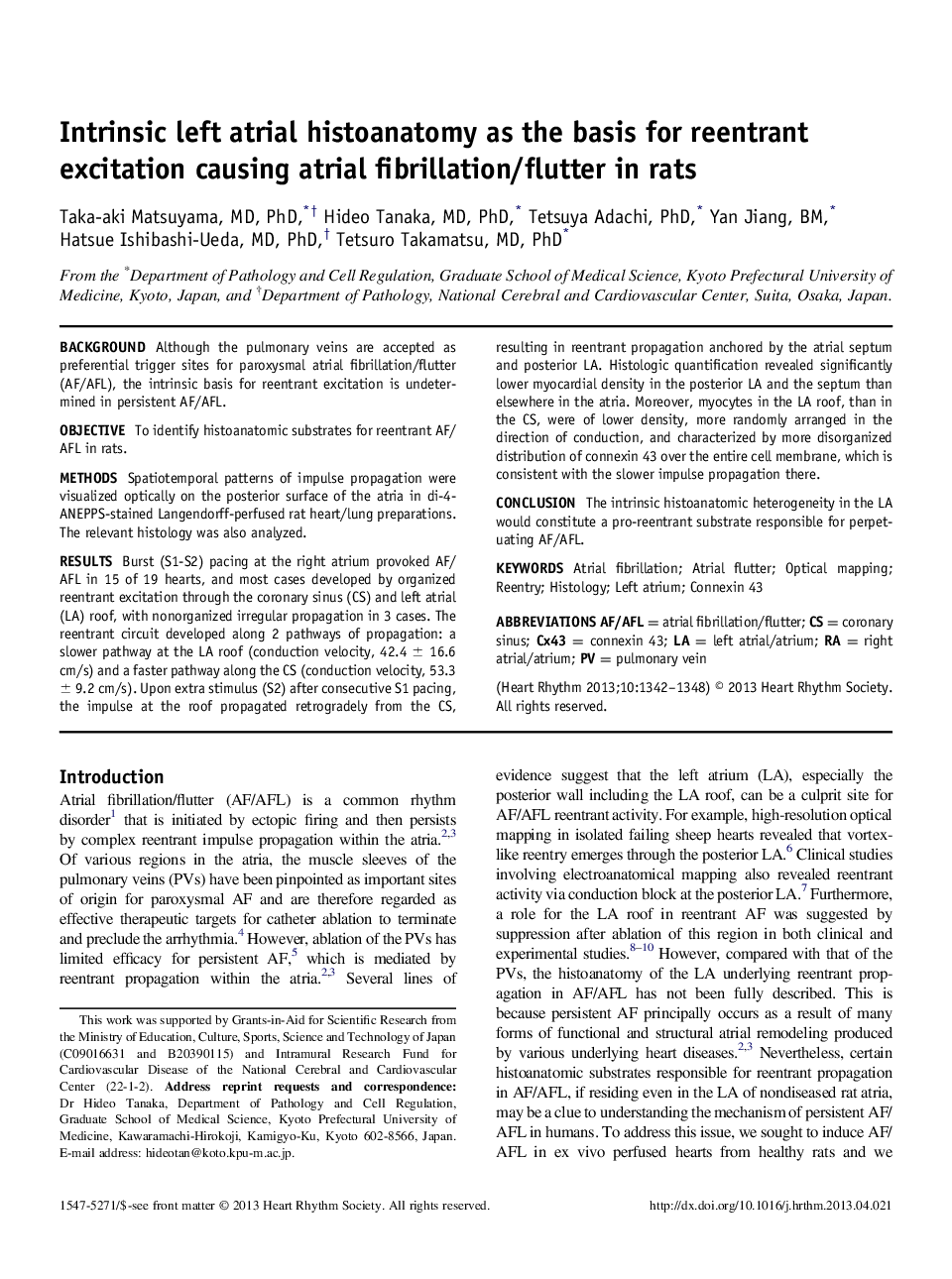| Article ID | Journal | Published Year | Pages | File Type |
|---|---|---|---|---|
| 2922192 | Heart Rhythm | 2013 | 7 Pages |
BackgroundAlthough the pulmonary veins are accepted as preferential trigger sites for paroxysmal atrial fibrillation/flutter (AF/AFL), the intrinsic basis for reentrant excitation is undetermined in persistent AF/AFL.ObjectiveTo identify histoanatomic substrates for reentrant AF/AFL in rats.MethodsSpatiotemporal patterns of impulse propagation were visualized optically on the posterior surface of the atria in di-4-ANEPPS-stained Langendorff-perfused rat heart/lung preparations. The relevant histology was also analyzed.ResultsBurst (S1-S2) pacing at the right atrium provoked AF/AFL in 15 of 19 hearts, and most cases developed by organized reentrant excitation through the coronary sinus (CS) and left atrial (LA) roof, with nonorganized irregular propagation in 3 cases. The reentrant circuit developed along 2 pathways of propagation: a slower pathway at the LA roof (conduction velocity, 42.4 ± 16.6 cm/s) and a faster pathway along the CS (conduction velocity, 53.3 ± 9.2 cm/s). Upon extra stimulus (S2) after consecutive S1 pacing, the impulse at the roof propagated retrogradely from the CS, resulting in reentrant propagation anchored by the atrial septum and posterior LA. Histologic quantification revealed significantly lower myocardial density in the posterior LA and the septum than elsewhere in the atria. Moreover, myocytes in the LA roof, than in the CS, were of lower density, more randomly arranged in the direction of conduction, and characterized by more disorganized distribution of connexin 43 over the entire cell membrane, which is consistent with the slower impulse propagation there.ConclusionThe intrinsic histoanatomic heterogeneity in the LA would constitute a pro-reentrant substrate responsible for perpetuating AF/AFL.
